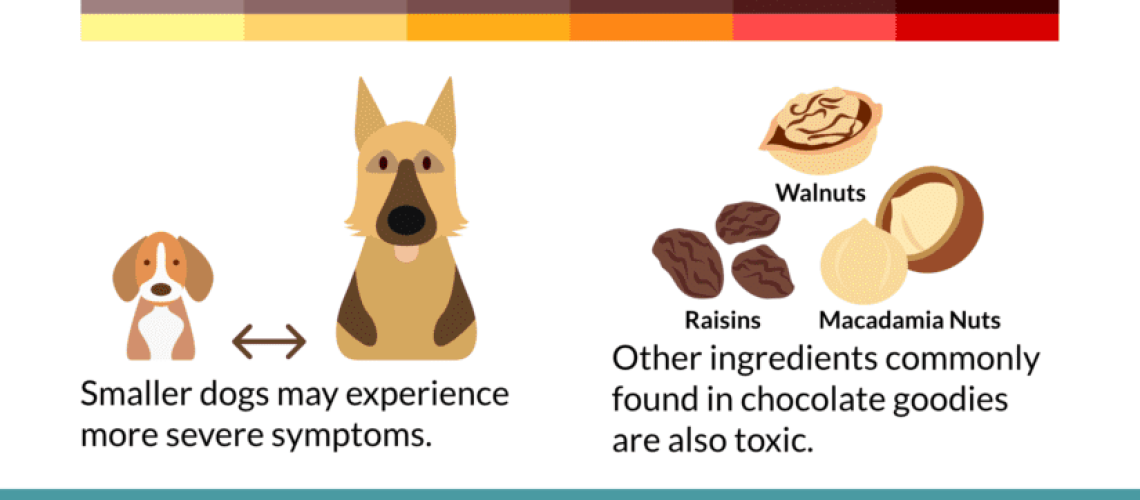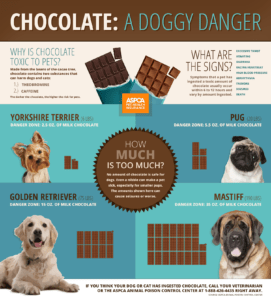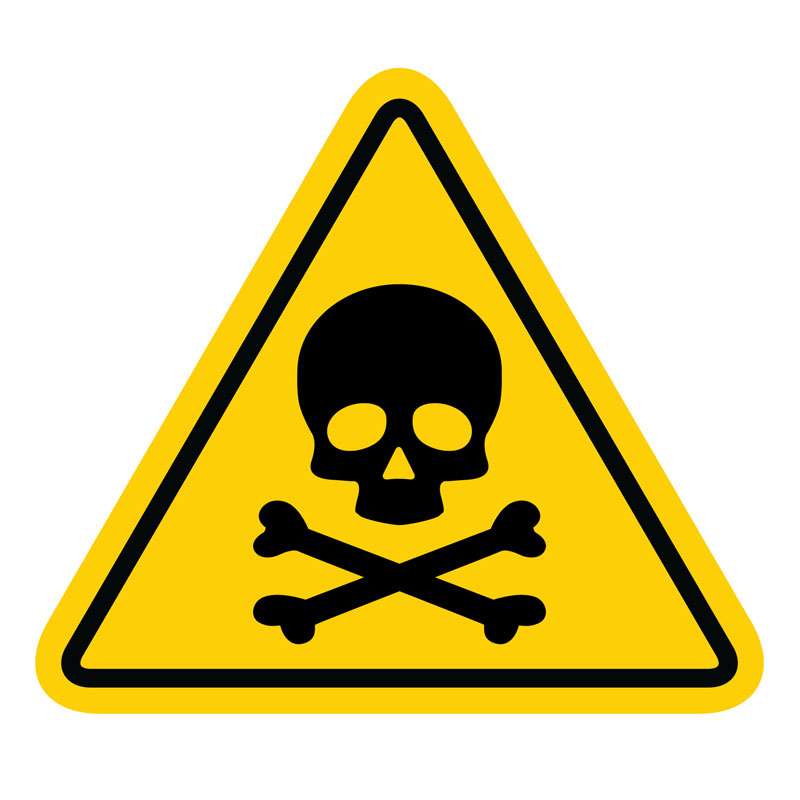Key Takeaways:
- Chocolate contains theobromine, a substance that is toxic to dogs.
- The severity of chocolate poisoning in dogs depends on the type of chocolate consumed and the dog's size.
- Symptoms of chocolate poisoning in dogs include vomiting, diarrhea, increased heart rate, and seizures.
- If you suspect your dog has ingested chocolate, contact a veterinarian immediately for advice.
- Prevention is key - keep all chocolate products out of reach from dogs to avoid potential poisoning incidents.
Are you a dog lover? Do you enjoy indulging in a delicious piece of chocolate? If so, then you need to delve into the fascinating world of chocolate poisoning in dogs. This topic not only provides valuable insights into how to keep your furry friend safe, but it also sheds light on why understanding this subject is essential for every pet owner. From uncovering the hidden dangers of chocolate to learning how to prevent potential emergencies, exploring this topic will empower you with the knowledge needed to protect your beloved canine companion. So, let's embark on this educational journey together and ensure that our furry friends stay happy and healthy!
What is Chocolate Poisoning in Dogs and Why is it Dangerous?
Chocolate poisoning occurs when a dog eats chocolate, which contains a substance called theobromine that can be toxic to them. Theobromine affects a dog's nervous system and cardiovascular system, leading to symptoms like vomiting, diarrhea, rapid breathing, increased heart rate, and even seizures. If left untreated, it can be life-threatening for dogs.
The reason why chocolate is dangerous for dogs is that their bodies cannot metabolize theobromine as efficiently as humans can. While we may enjoy a sweet treat without any harm, even a small amount of chocolate can have serious consequences for our furry friends. It's important to keep all forms of chocolate out of reach from dogs to prevent accidental ingestion.
Why is Theobromine Harmful to Dogs?
Theobromine is a stimulant that affects the central nervous system and cardiovascular system in dogs. It increases their heart rate and blood pressure, which can lead to heart problems or even heart failure in severe cases. Theobromine also acts as a diuretic, causing increased urination and potential dehydration.
List of Common Symptoms of Chocolate Poisoning in Dogs:
- Vomiting
- Diarrhea
- Rapid breathing
- Increased heart rate
- Tremors or seizures
- Hyperactivity or restlessness
- Pale gums
- Weakness or collapse
List of Potential Long-Term Effects of Chocolate Poisoning:
- Heart problems
- Kidney damage
- Liver damage
- Neurological issues
How Chocolate Affects a Dog's Body and Warning Signs to Look For
Understanding the Effects of Chocolate on Dogs
When a dog ingests chocolate, it can lead to various harmful effects on their body. The main culprit behind this is theobromine, a substance found in chocolate that dogs cannot metabolize as efficiently as humans. Theobromine stimulates the central nervous system and cardiovascular system in dogs, causing an increase in heart rate and blood pressure. This can result in symptoms such as restlessness, increased thirst, panting, and even seizures.
Warning Signs of Chocolate Poisoning in Dogs
It's crucial for dog owners to be aware of the warning signs that indicate chocolate poisoning. These signs may include vomiting, diarrhea, excessive drooling, rapid breathing, muscle tremors, and in severe cases, collapse or even death. If you notice any of these symptoms after your dog has consumed chocolate, it is essential to seek immediate veterinary care.
Tips for Identifying Chocolate Poisoning Symptoms:
- Monitor your dog closely for any behavioral changes or physical symptoms.
- Keep an eye out for vomiting or diarrhea.
- Watch for increased heart rate or difficulty breathing.
- Take note of any unusual restlessness or hyperactivity.
Remember that even small amounts of chocolate can be toxic to dogs, so it's crucial to act quickly if you suspect your furry friend has ingested any.
Are All Types of Chocolate Harmful to Dogs?
Different Types of Chocolate and Their Toxicity Levels
Not all types of chocolate are equally harmful to dogs. Dark chocolate contains higher levels of theobromine compared to milk chocolate or white chocolate. Therefore, dark chocolate poses a greater risk when consumed by dogs. Unsweetened baking chocolate contains the highest concentration of theobromine and is particularly dangerous for our canine companions.
Safe Chocolate Alternatives for Dogs
While chocolate should be strictly avoided, there are safe alternatives that can satisfy your dog's sweet tooth. Carob is a popular substitute for chocolate in dog treats as it does not contain theobromine. It has a similar taste and texture to chocolate, making it an excellent choice for indulging your furry friend without any risks. Always check the ingredients of dog treats to ensure they do not contain any chocolate or cocoa products.
Safe Chocolate Alternatives:
- Carob-based treats specifically made for dogs.
- Homemade treats using carob powder or carob chips.
- Dog-friendly fruits like sliced apples or bananas as occasional sweet snacks.
Remember, when it comes to chocolate, prevention is key. Keep all chocolate products securely stored away from your dog's reach to avoid any accidental ingestion.
Steps to Take if Your Dog Eats Chocolate and How to Induce Vomiting at Home
Immediate Actions When Your Dog Ingests Chocolate
If you catch your dog eating chocolate or suspect they have consumed some, quick action is crucial. First, stay calm and assess the situation. Determine the type and amount of chocolate ingested, as this information will be helpful when seeking veterinary advice.
Inducing Vomiting at Home (Only Under Veterinary Guidance)
Inducing vomiting in dogs should only be done under veterinary guidance. It is not recommended to induce vomiting at home without professional advice due to potential risks associated with certain types of chocolates or underlying health conditions in dogs. Contact your veterinarian immediately after discovering your dog has eaten chocolate so they can provide appropriate guidance based on your specific situation.
Steps to Take After Discovering Chocolate Ingestion:
1. Stay calm and assess the situation.
2. Collect information on the type and amount of chocolate consumed.
3. Contact your veterinarian for immediate advice.
4. Follow their instructions carefully, which may include inducing vomiting or other necessary actions.
Remember, prompt veterinary care is essential to ensure your dog's well-being after chocolate ingestion.
Can Chocolate Poisoning Affect Any Dog, Regardless of Size or Breed?
Risk Factors for Chocolate Poisoning in Dogs
While all dogs are susceptible to chocolate poisoning, certain factors can increase their risk. The size and weight of a dog play a significant role in determining how toxic chocolate can be for them. Smaller dogs are more vulnerable as even small amounts of chocolate can have a severe impact on their bodies compared to larger breeds.
Breed Sensitivity to Chocolate
Some dog breeds may be more sensitive to the effects of chocolate due to variations in their metabolism or tolerance levels. Breeds such as Dachshunds, Shih Tzus, and Yorkshire Terriers have been found to be more susceptible to theobromine toxicity. However, it is important to note that any dog can experience adverse effects from consuming chocolate.
Factors That Increase Chocolate Toxicity Risk:
- Small size or low body weight
- Pre-existing health conditions
- Individual sensitivity variations
Regardless of breed or size, it is crucial for all dog owners to prioritize preventing their pets from accessing any form of chocolate.
Tips for Preventing Chocolate Poisoning in Dogs and Safe Alternatives for Treats
Keeping Your Dog Safe from Chocolate
Preventing chocolate poisoning starts with being proactive and taking necessary precautions:
1. Store all chocolates securely: Keep chocolates out of reach from your dog by storing them in closed cabinets or high shelves.
2. Educate family members: Ensure everyone in your household understands the dangers of chocolate for dogs and the importance of not sharing any with them.
3. Be cautious during holidays: Holidays like Halloween and Christmas often involve increased chocolate consumption. Keep a close eye on your dog during these times, and remind guests not to offer any chocolates to your furry friend.
4. Dispose of wrappers properly: Dogs can be attracted to the smell of chocolate wrappers, so make sure to dispose of them in a sealed trash bin.
Safe Alternatives for Dog Treats
There are plenty of safe and delicious alternatives to chocolate that you can offer your dog as treats:
- Peanut butter: Look for peanut butter specifically made for dogs, as some human varieties may contain xylitol, which is toxic to dogs.
- Frozen fruits: Frozen slices of banana or berries can be a refreshing and healthy treat for your dog on hot days.
- Dog-friendly biscuits: Choose biscuits or treats made specifically for dogs, ensuring they do not contain any chocolate or harmful ingredients.
By following these preventive measures and offering safe alternatives, you can keep your furry friend happy and healthy while satisfying their treat cravings without any risks.
In conclusion, chocolate can be harmful to dogs and may cause poisoning. It is important for dog owners to keep chocolate out of their pet's reach and seek immediate veterinary help if their dog consumes chocolate.
What are the first symptoms of chocolate poisoning in dogs?
The clinical signs that dogs experience from consuming chocolate vary depending on the amount and type of chocolate. The most common signs include vomiting, diarrhea, increased thirst, panting or restlessness, excessive urination, and a rapid heart rate. In more severe cases, dogs may also exhibit muscle tremors, seizures, and heart failure.
How long does it take for a dog to get sick after eating chocolate?
The symptoms of chocolate poisoning in dogs can take anywhere from 6 to 12 hours to show. If you are aware that your dog has consumed chocolate, it is important to contact your veterinarian immediately without waiting for any symptoms to appear. If it is outside of regular clinic hours, you should contact a nearby emergency veterinary clinic.
Can dogs survive chocolate poisoning?
It is crucial to remember that chocolate can be extremely toxic to dogs. While chocolate poisoning may not always be deadly for dogs or cats, it can be highly hazardous and can result in long-term health issues.
How much chocolate is toxic for a dog?
For dark chocolate, the recommended amount is 1.5 ounces per 10 pounds of body weight. So, for a 20 pound dog, 3 ounces would be considered a toxic amount. If your dog has ingested that much or more, it's important to contact your veterinarian. For milk chocolate or semi-sweet chocolate, anything over 3.5 ounces, which is equivalent to a standard size Hershey's bar, would be considered poisonous for a small 10 pound dog.
What if my dog eats chocolate but seems fine?
If your dog seems fine, it's still a good idea to contact your veterinarian. They can determine the amount of toxins your pet ingested compared to their body weight using a dog chocolate toxicity calculator. They may then advise you to keep an eye out for any signs of poisoning.
What does dog vomit look like after eating chocolate?
When a dog ingests a sufficient amount of theobromine, it will experience symptoms of poisoning. These symptoms start with abdominal pain and vomiting, which may contain blood. The vomit often has a distinct smell due to the significant presence of chocolate.

















